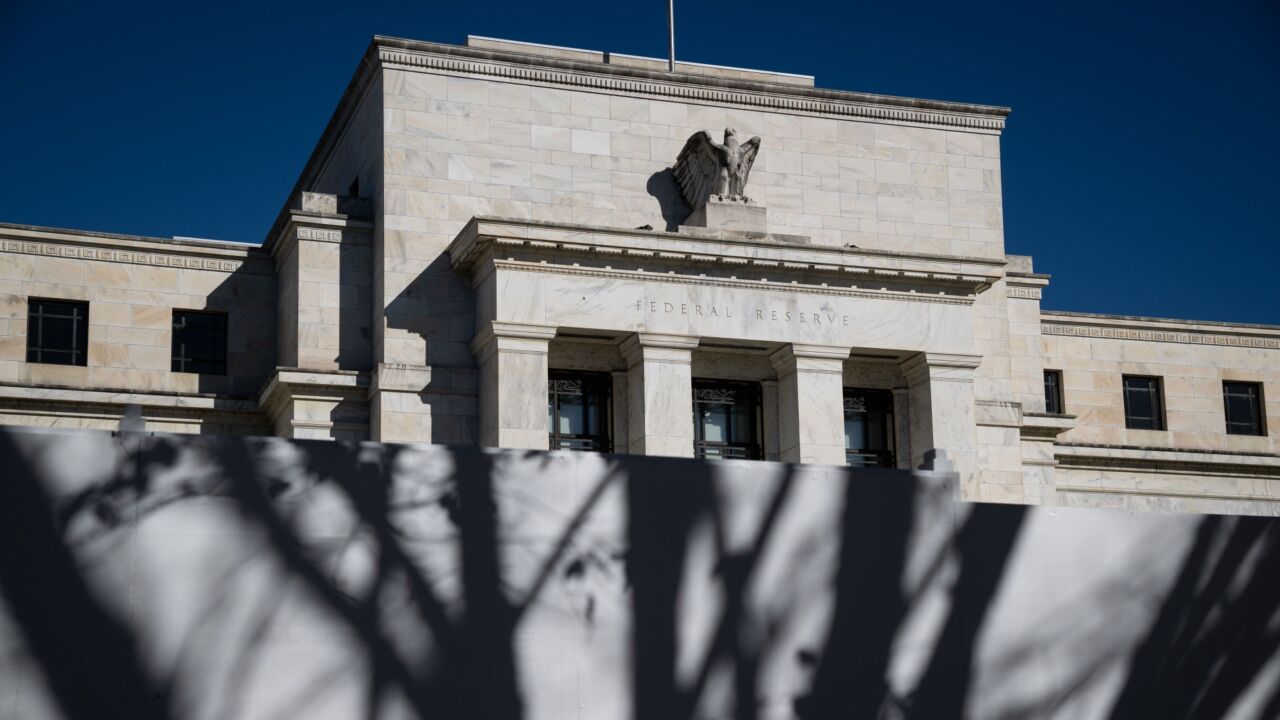
As new competitors continue to flood the market with exchange-traded funds this summer, established players like Barclays PLC, State Street Corp., and Vanguard Group are adjusting their lineups and launching products to maintain their dominant market share.
Four companies - Barclays (58.4%), State Street (26%), Bank of New York Co.'s Hamilton Funds (8.4%), and Vanguard (4.6%) - dominate the industry, managing 97.4% of the exchange-traded fund market on June 30. However, their share has diminished 1.6 percentage points in the past year as more providers have entered the market, according to data from Financial Research Corp., a Boston firm that tracks the industry.
Executives at Barclays, State Street, and Vanguard said they have introduced or plans to introduce products to remain on the cutting edge as competition intensifies.
"There is a certain gold-rush mentality going on right now in the exchange-traded fund market," said Gary McDonald, a principal with State Street Global Advisors. "The industry has had 40% to 60% growth annually over the last couple of years. Everyone's interest is piqued."
The excitement in the industry is warranted. In the past year assets in U.S. exchange-traded funds have increased 39.1%, to $341.3 billion, according to Financial Research Corp., which predicts the worldwide total, currently $857 billion, will reach $1 trillion by 2010. Another research firm, Celent LLC, predicts it will reach $2 trillion by then.
Joseph Keenan, a managing director and head of U.S. fund services sales at Bank of New York, said more providers are launching ETFs, because of the impressive inflows and increased interest from retail investors.
"We expect another 180 to 200 exchange-traded funds will be launched in the next 12 months," he said. "There is a lot of stuff in the works and a lot of providers looking to enter the market. This is really an enormous growth story."
In the first half 62 exchange-traded funds were launched, including 28 from providers other than the four largest ones, according to Financial Research Corp.
Mr. Keenan said Barclays, State Street, and Vanguard will continue to get the "lion's share" of the assets. However, their share will decline as the number of providers increases. (Bank of New York has said it is scaling back its interest in proprietary funds.)
"They won't control 70% to 80% of the market anymore, but 50% to 60% of a trillion market isn't a bad place to be," he said.
Barclays Global Investors manages the iShares funds, which had $199.5 billion of assets as of June 2. This year it has launched 10 subsector funds for advisers to sell to retail investors and a currency one that focuses on the silver market.
Lance Berg, a spokesman for Barclays, said it is not concerned by the fact that four companies - WisdomTree Investments Inc., Deutsche Bank AG, Victoria Bay Asset Management LLC, and ProShares Advisors Inc. - launched their first exchange-traded funds this year.
"Competition is good," he said. "It validates our belief in the value of exchange-traded funds. However, what we hear from our clients and from advisers, is that they want to invest in ETFs that have a strong track record."
Mr. Berg said Barclays is confident it will maintain its market-leading position. According to data from Financial Research Corp., his company has attracted 79% of the $31 billion of inflows into ETFs this year.
The new competition has hit State Street and Bank of New York the hardest. According to Financial Research Corp., State Street has lost 4.2 percentage points of its market share, and Bank of New York has lost 2.9 percentage points.
Mr. McDonald said fund flow data often can be misinterpreted, particularly over short periods. Since the funds are used predominantly by institutional investors, a few large trades can lead to net outflows, he said.
"Unlike mutual fund flows, ETF flows typically are driven by large institutional traders, and … [outflows] can often be a result of factors that are not directly related to demand for a particular market segment," he said.
State Street, which launched the industry's first exchange-traded fund in 1993 and now has $100 billion of ETF assets, launched six funds in June and plans to launch more this year, Mr. McDonald said.
"We are glad that this market is growing at this pace, and we are encouraged by our success and the potential in the market," he said. "I think investors know that we were there when it wasn't so popular. We were there when people thought that this was a fad."
Vanguard has increased its ETF assets under management 40% in the first seven months of this year, to $16 billion. Last month it changed the name of its fund family from the Viper Shares to the Vanguard ETFs to draw the fund lineup closer to its strong, recognizable brand.
The Malvern, Pa., firm, which manages $909 billion of assets, introduced an exchange-traded fund in April, and this month it plan to launch two more, the Vanguard Mid-Cap Value ETF and the Vanguard Mid-Cap Growth ETF.
Mr. Keenan said new providers are launching niche products that the larger competitors do not offer. To keep up with the growing array of funds, Bank of New York is planning to start an ETF Center in November to provide retail investors and advisers with information and education about these products, he said.
"Firms are slicing and dicing the ETF market down to razor-thin market sectors," he said. "ETFs are not just about traditional indexes anymore. There are products now that look at socially responsible indexes and clean energy indexes. There is just a whole lot of innovation in this space, and companies are developing new products in hopes of enjoying some of the exponential growth in this space."
Mr. Berg said he expects providers to offer more fixed-income and commodity-based funds and products covering hard-to-access markets, such as China. Barclays, which launched its first ETF in 2000, will continue to analyze the market and will launch some commodity-based and fixed-income funds this year, he said.
"There is room to grow," he said. "This is just tip of the iceberg for ETFs, and there are a lot of opportunities for a lot of competitors. But our products are based on traditional indices and that is basically what our clients are looking for."
Mr. McDonald said State Street is developing niche products to keep up with market demand.
"There is a real lab environment here," he said. "We have a product development process, and we will come up with new ideas. ... The pioneers in this market like Barclays and State Street will continue to gather share.
"A lot of people are excited about ETFs, but really there are three high-quality companies" - Barclays, State Street, and Vanguard - "and a lot of smaller innovators," he said.
John Woerth, a spokesman for Vanguard, said the increased competition is good, but he expects investors want established ETF brands.
"For investors, there might be too much choice in the ETF space at this juncture," he said. The increased number of competitors "means more competition for investor attention, but we believe that with Vanguard's brand, our cost advantage, and the diversification we can offer, investors will continue to gravitate toward our products."





